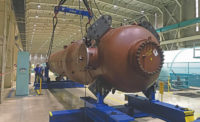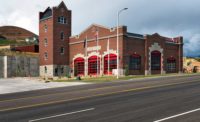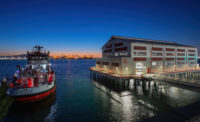Oconee Nuclear Station Feedwater Heater Replacements
Seneca, S.C.
Best Project
Owner: Duke Energy
Lead Design Firm: Zakary
General Contractor: Day & Zimmermann
Specialty Welding: ARC Energy Services
Specialty Rigging: Engineered Rigging
Oconee Nuclear Station engaged its contractors eight months before a complicated feedwater heater replacement project was set to begin. To execute the project successfully, contractor Day & Zimmerman used precise planning, a unique rigging solution and technology to safely complete the work five days ahead of schedule while saving $2.1 million in the process.
The project team engineered and executed a lift plan for removing the old feedwater heaters (FWHs) from a highly confined space. Because the crane serving the FWH bay did not provide sufficient headroom to remove the units vertically, the project team custom-engineered a temporary lift device (TLD). Mounted atop the girders of the existing FWH bay crane and designed to eliminate single-point failures, the hydraulically controlled lift device provided the precision maneuverability necessary for the delicate lift operations, including the ability to perform multi-axis, millimeter-length movements of each suspended load. What’s more, the lift plan allowed the units to be removed with their asbestos-containing insulation material intact, minimizing exposure risks to contractor personnel.
With the old heaters successfully out of the way, contractors then installed two replacement units. Relying on a time-phased 3D model of the workspace created using laser-tracking during the project planning phase, the project team laid out the step-by-step installation process, including addressing deviations in the pedestal bolt hole patterns between the original and replacement units. By modifying the new FWHs prior to installation, the units precisely matched existing spacing. The 3D model also ensured that the new units matched up perfectly with the area’s existing piping network.
For the first time at a Duke Energy facility, contractors used phased array weld examination on the large-bore 24-in. condenser lines. The remaining 700 welds were completed safely and with zero rejections.
The 12-day FWH removal and replacement operation was performed while two adjacent nuclear units functioned at 100% power. Working with state environmental health officials, the project team developed a comprehensive safety plan that allowed the FWHs to be extracted from the nuclear station and transported via public roads to an offsite location where the units’ asbestos insulation was safely abated according to federal regulations. This approach eliminated more than 4,000 hours of potential safety exposure and contributed to the project being completed under budget.







Post a comment to this article
Report Abusive Comment